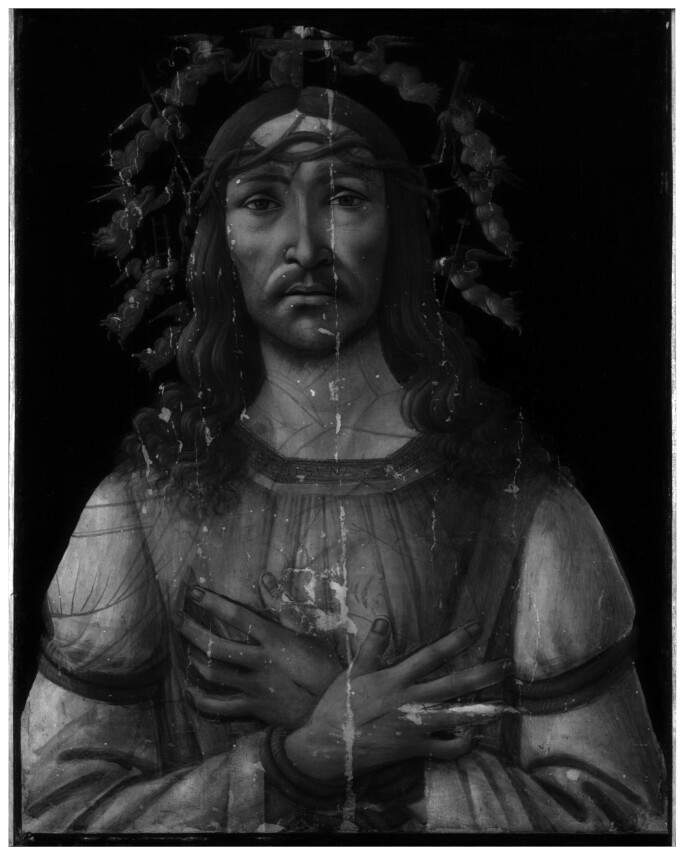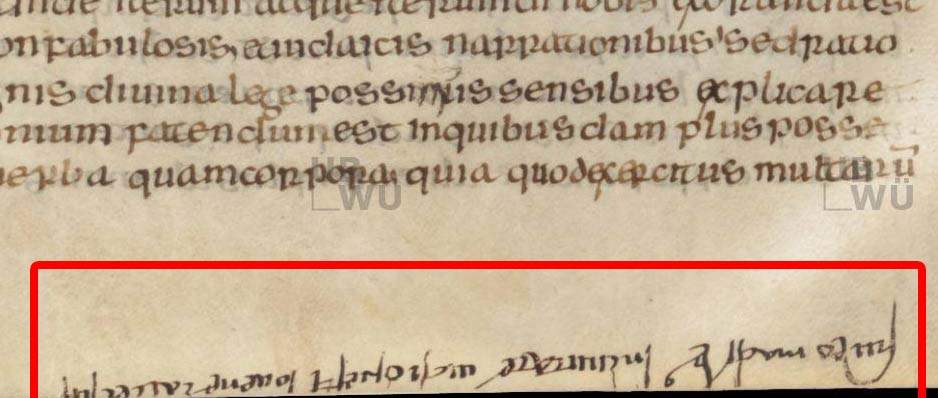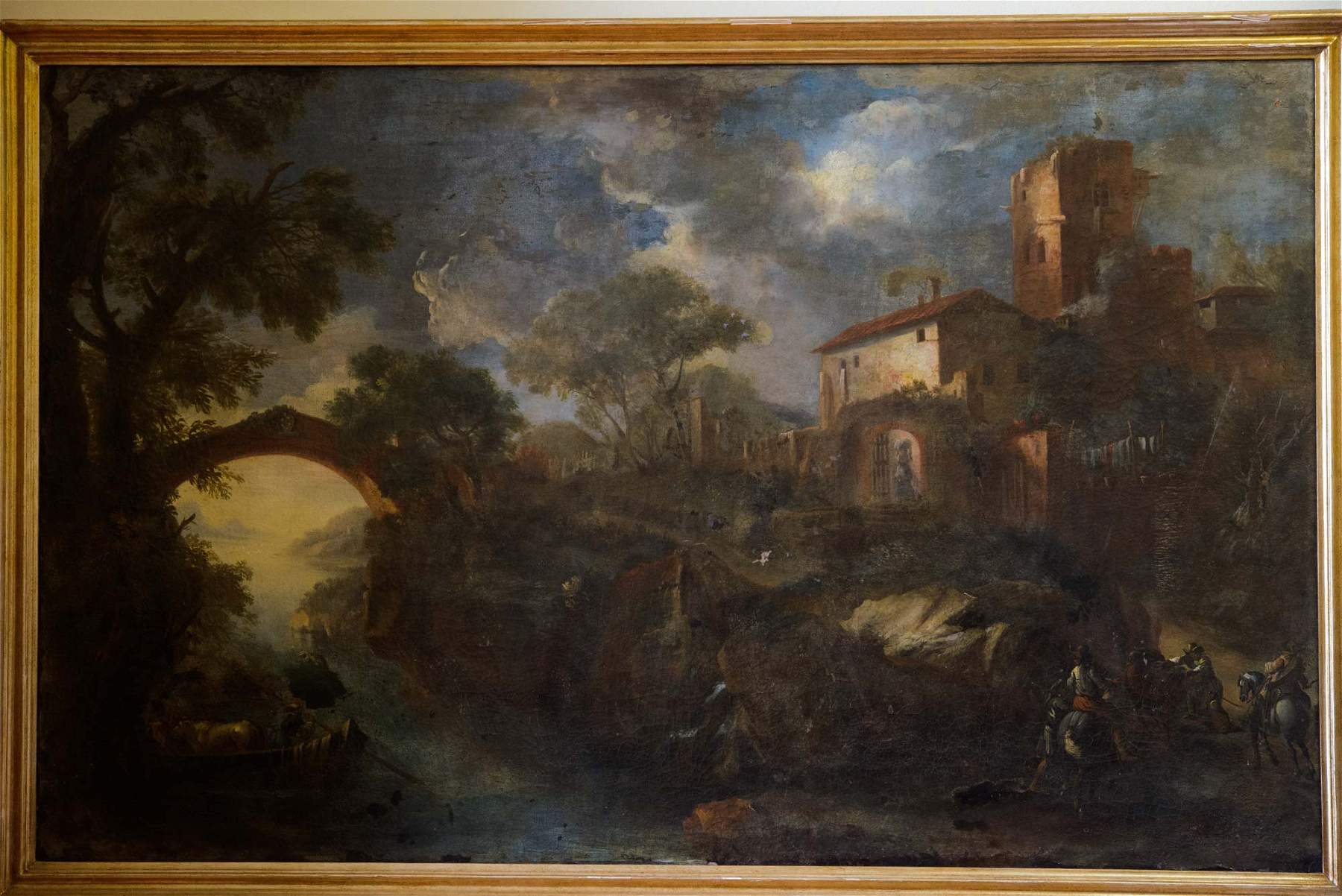End of the year, time for rankings: also for 2022 we offer the public our selection of the ten most interesting art-historical discoveries of the year. Here are what we think were the best surprises that art history gave us this year!
Just before it went on sale at Sotheby’s, Sandro Botticelli’s Vir Dolorum(later sold for $45.4 million had a surprise in store: technical analysis revealed a drawing that Botticelli had erased, the profile of a Madonna, which was discovered thanks to infrared analysis. The painting is in good condition, a situation that facilitated the attribution of the painting to Botticelli. It is a work referring to his late maturity, but all the typical elements of his painting appear in it: analyses in particular have remarked the modeling of the flesh tones, rendered with delicate brushstrokes of brown and pink on muted tones, and then engravings were found on the pictorial surface that define the cross above Jesus’ head (that of engravings was a typical practice of Botticelli and many other artists, who by engraving the surface obtained guides to trace some elements of the composition). Read the full story here.

A forgotten Henri Matisse canvas has reappeared in France: it is La Villa Bleue, a 1918 work made in Nice, part of a series of five paintings depicting the same subject, and which had never before been exhibited in public. The work is important because it is in the early days of Matisse’s Nice period.The painting was offered for sale by the Millon house in an auction held March 9-10. Estimate: between 150 and 200 thousand euros. Sold later at 494 thousand. Read the full story here.

A sculpture that had been purchased in 2002 in a garden statue auction for only 5,200 pounds turned out to be a work by the great Antonio Canova. A “historic rediscovery” it was called by Christie’s. It is in fact the work that was commissioned from Canova by the British prime minister of the time, serving from 1812 to 1827, Robert Banks Jenkinson, 2nd Earl of Liverpool. “It is a miracle,” said art historian Mario Guderzo, a specialist on Canova and director of the Museo-Gipsoteca Antonio Canova in Possagno, “that an exceptional masterpiece by Canova, long thought to be lost, has been found two hundred years after it was made.” Going to auction at Christie’s, it went unsold. Read the full story here.

A letter concerning Donatello that had been lost in the 19th century resurfaced in Prato in May. The missive was sent on June 19, 1434, by Matteo degli Organi, a nickname for Matteo da Prato due to his trade as an organ master, to the Workers of the Sacred Girdle of Prato at the request of Donatello, who was his friend. In the letter, Matteo degli Organi informed the Duomo workers that the artist had finished the first of the reliefs for the pulpit of the Prato cathedral, and the work had caused quite a stir in Florence, where all art connoisseurs went on to say “that never was such a story seen.” Read the full story here.

This is not art history, unless you consider literature an art, but it is still an exceptional discovery. In June, the trace of the oldest known verse in Italian literature was discovered: it is an annotation, dating from between the late 9th century and the early 10th century, written by a monk in the margins of an 8th-century manuscript preserved at the University Library in Würzburg, Germany. Read the full story here.

Also in Germany, in the Oldenburg Landesbibliothek, a miniature by Albrecht Dürer (Nuremberg, 1471 - 1528) was found in June. It is an image depicting two putti on dolphin-like sea creatures, with a coat of arms in the center. The miniature is just under 16 cm wide and 6.5 cm high, and according to the Oldenburg Landesbibliothek it is “an extraordinary” and “spectacular discovery.” The miniature decorates the first page of a Greek text printed in Venice in 1502 by Aldo Manuzio (Bassiano, 1449 - Venice, 1515) and was discovered as part of a research project on the Oldenburg library’s aldine collection. Read the full story here.

A hidden self-portrait by Vincent van Gogh was found at the National Galleries of Scotland in Edinburgh in July, a discovery described as “sensational” by the Scottish museum. It is a previously unknown work: the mysterious image was on the back of the Peasant’s Head painted in April 1885 in Neunen, which is kept at the Scottish museum. It was discovered thanks to an X-ray taken of the painting ahead of its loan for the A Taste for Impressionism exhibition scheduled from July 30 to Nov. 13 at the Royal Scottish Academy in Edinburgh. Visitors got their first glimpse of the extraordinary image uncovered by X-rays through a specially arranged lightbox in the Royal Scottish Academy’s exhibition itinerary. Read the full story here.

During the renovation of a house that belonged to Andrea Pazienza’s family until 2003 in San Menaio on the Gargano, a room entirely covered with unpublished drawings by the artist was discovered. Drawings that the well-known cartoonist, who died at the age of thirty-two in 1988, made with blue and red spray cans on three walls, and the signature is unmistakable: Paz 72. The drawings were made by Andrea Pazienza at the age of sixteen in the smallest room of his vacation home. Read the full story here.

It is perhaps not the most important one but certainly the most curious and talked about. Indeed, it has been discovered that a Piet Mondrian painting, New York City 1 from 1941, has been displayed upside down for more than 75 years at the Kunstsammlung Nordrhein-Westfalen in Düsseldorf, Germany. The announcement was made by curator Susanne Meyer-Büser at a press conference, however, during which it was explained that the painting will remain hanging as it has since 1945, that is, with the grouping of yellow, red, and blue stripes at the bottom and not at the top as it originally was. The discovery bears the signature of an Italian artist, Francesco Visalli, who as early as September 2021 sent an email to the museum’s director, Anette Kruszyinski, attaching studies and period images to support the theory. Read the full story here.

In seventeenth-century Florence, a Jewish painter lived and worked at the Medici court, an extremely rare case for the time: his name was Jona Ostiglio, and this discovery was made by the Hebraist Piergabriele Mancuso and the art historian Maria Sframeli, an official at the Uffizi. Ostiglio was a skillful and versatile artist, capable of acquiring important commissions from the ruling dynasty and from powerful Florentine families such as the Mannellis, esteemed to the point of being able to join the Accademia delle Arti e del Disegno in 1680, then in fact remaining its only Jewish member until the last century. The unprecedented “rediscovery” of Ostiglio’s story, which remained hidden in the folds of art history for centuries, was presented in November at the Uffizi. Read the full story here.

 |
| The 10 most interesting historical and artistic discoveries of 2022 |
Warning: the translation into English of the original Italian article was created using automatic tools. We undertake to review all articles, but we do not guarantee the total absence of inaccuracies in the translation due to the program. You can find the original by clicking on the ITA button. If you find any mistake,please contact us.